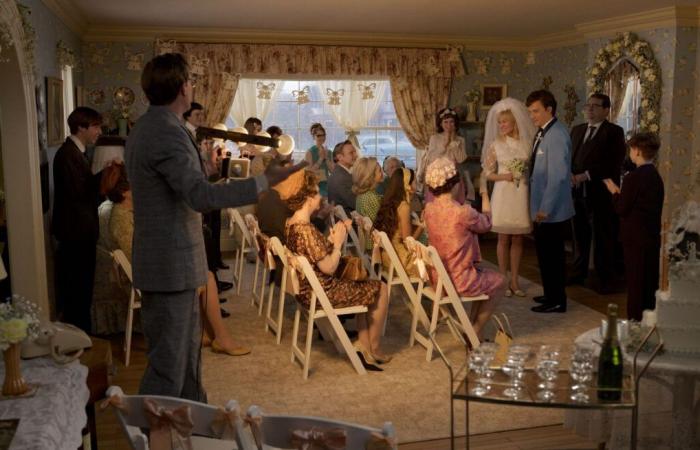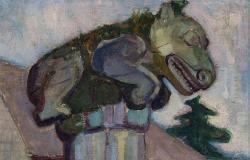Planted in a corner, the camera films, from the inside, the construction of a house. Within this fixed shot showing a living room, a variety of characters from different eras will parade in alternation, even in juxtaposition. These successive occupants will thus cross this given framework, sometimes even before the said house is erected there. A vast yet confined chronicle based on the graphic novel by Richard McGuire, which relied on this concept of a fixed perspective, the film Here (Ici) brings together, thirty years later, to remain in this idea of time passing, the team of Forrest Gumpdirector Robert Zemeckis and his two stars, Tom Hanks and Robin Wright. Duty discussed this cinematic experiment with the first two.
“In the graphic novel, there is this passage in which a middle-aged man takes care of his old father, lying on the sofa bed in the living room. This image became, for my co-writer Eric Roth and me, the heart of the film. We built the scenario around that moment,” reveals Robert Zemeckis during a virtual roundtable.
Note that, apart from Eric Roth, the composer Alan Silvestri and the director of photography Don Burgess were also part of the adventure of Forrest Gumpa 1994 phenomenon film which was not without its own technological challenges.
In fact, this taste for being at the forefront in this field has long motivated Zemeckis, Back to the Future (Back to the future) has The Polar Express (Boreal Express), passing through Who Framed Roger Rabbit (Who wants Roger Rabbit’s skin?) et Death Becomes Her (Death suits you so well). A blend of animatronics and pioneering digital effects, a striking integration of traditional animation with live-action scenes, computer animation pushing the boundaries of motion capture: Zemeckis loves to innovate.
In recent years, however, the director has often been criticized for technological innovation coming at the expense of just about everything else.
“It happens that we learn from criticism, but it happens that the criticism is unfounded and does not like something that is perfect in itself,” comments the filmmaker, philosopher.
The contribution of AI
In HereRobert Zemeckis this time uses artificial intelligence (AI) developed by the Metaphysic firm in order to rejuvenate his performers.
“We knew that this supercomputer was going to rejuvenate us and that what would normally have taken six months of post-production work was going to be done in just a nanosecond,” says Tom Hanks during a second virtual round table. Robin and I were shooting the scene, and we could see the result right then and there. There was still a bit of tweaking to do, but it was quite striking. We could see ourselves again at 17 years old, at 22 years old… It was very impressive. »
Once the initial wonder passed, Tom Hanks and Robin Wright used this possibility of seeing themselves rejuvenated immediately after each take in order to correct their respective postures, their delivery, in order to perfect the illusion of youth.
To specify Robert Zemeckis: “If this digital makeup works, it is because the performers are in charge: it is their warm and emotional performances that are perceptible. »
On the subject of AI, Zemeckis admits that he does not know how far its advances in cinema will go. “There are many things that AI will be able to do that we have not yet designed. What I learned from making a certain film about the future is that we always underestimate the future when we try to predict it. »
The best way
As for the actual shoot, Robert Zemeckis knew from the start that it would be one of his most complex.
“You might think otherwise, but once you understand that every scene in the film has to work and take place in this single camera angle… It takes a lot of prep work. We rehearsed a lot, more than for any of my other films. Every prop, every wall corner, every window, everything that can be seen behind those windows… The locations of everything that appears in this shot had to be carefully considered. »
In this regard, Tom Hanks claims to have relied entirely on his accomplice “Bob”, whom he met for a fifth time after Forrest Gump, Cast Away (Alone in the world), The Polar Express et Pinocchio (2022 musical version).
“We could have made this film in the classic way, with close-ups, long shots… But Bob is a filmmaker, and he was convinced that the preferred way was the best way to deal with this theme, which is- i.e. time. This technical bias allows us to observe the effect of time on these characters. Space remains unchanged on the screen: time is the only truly moving element. »






